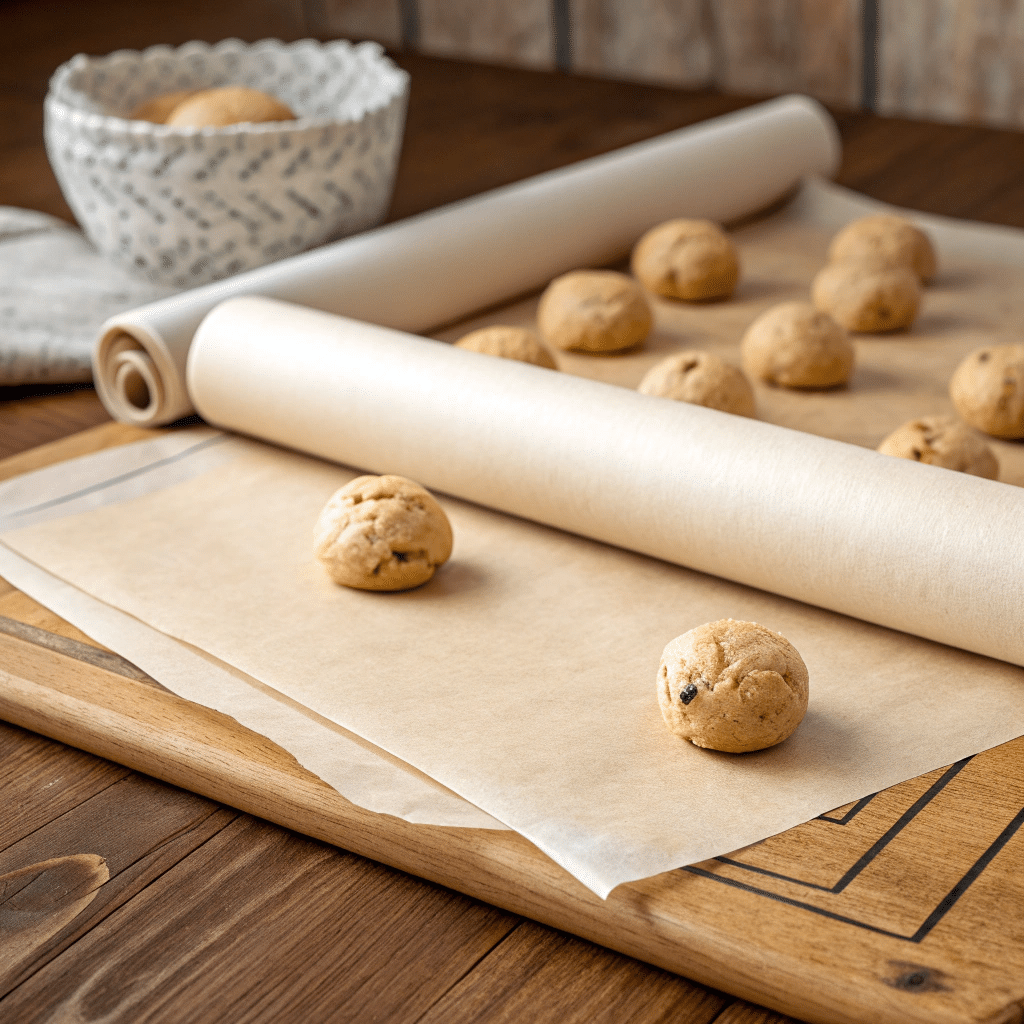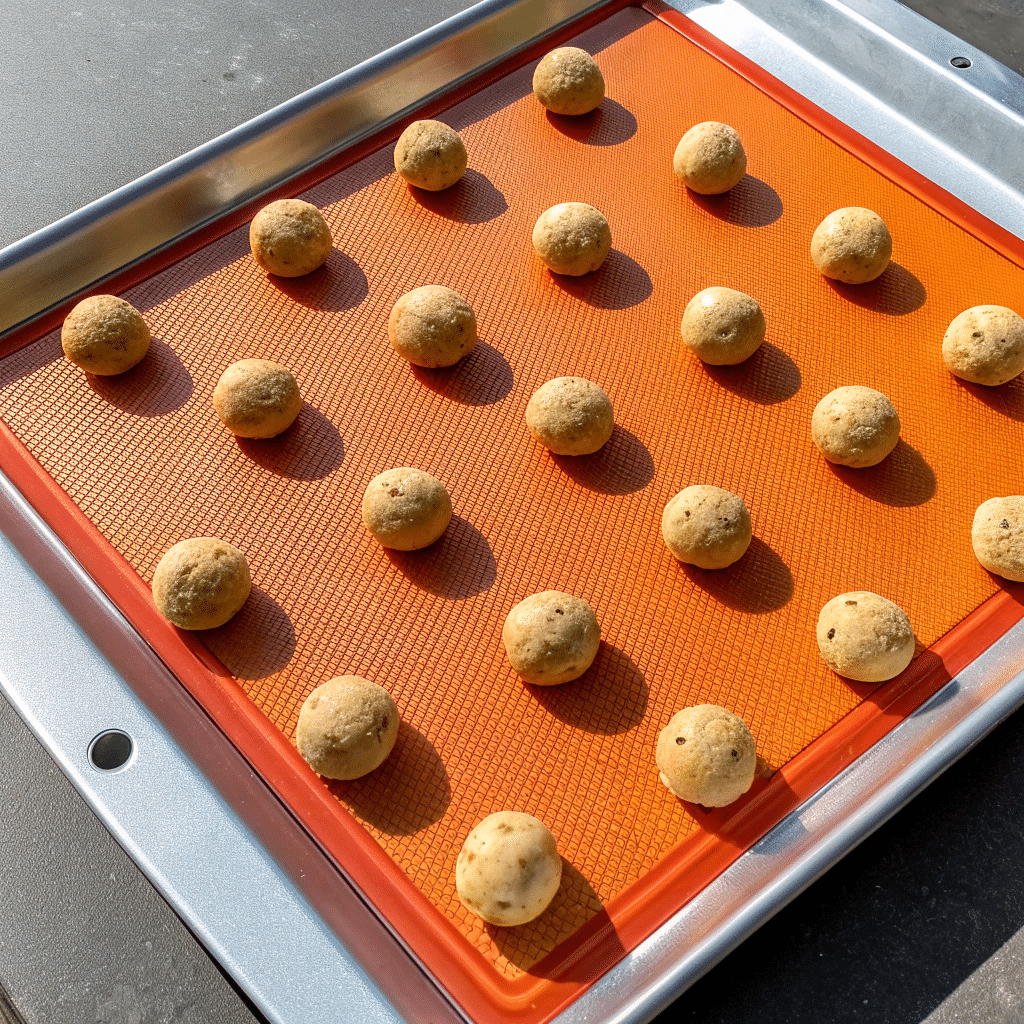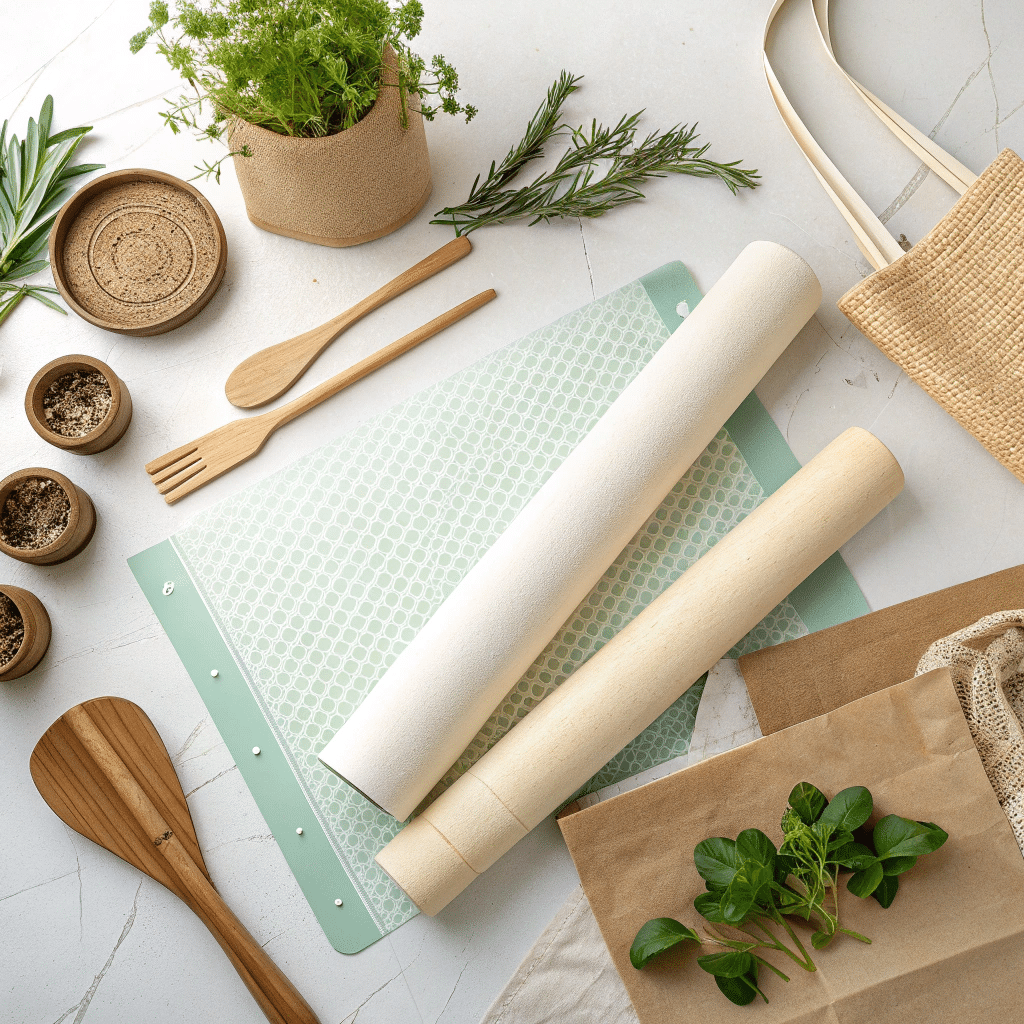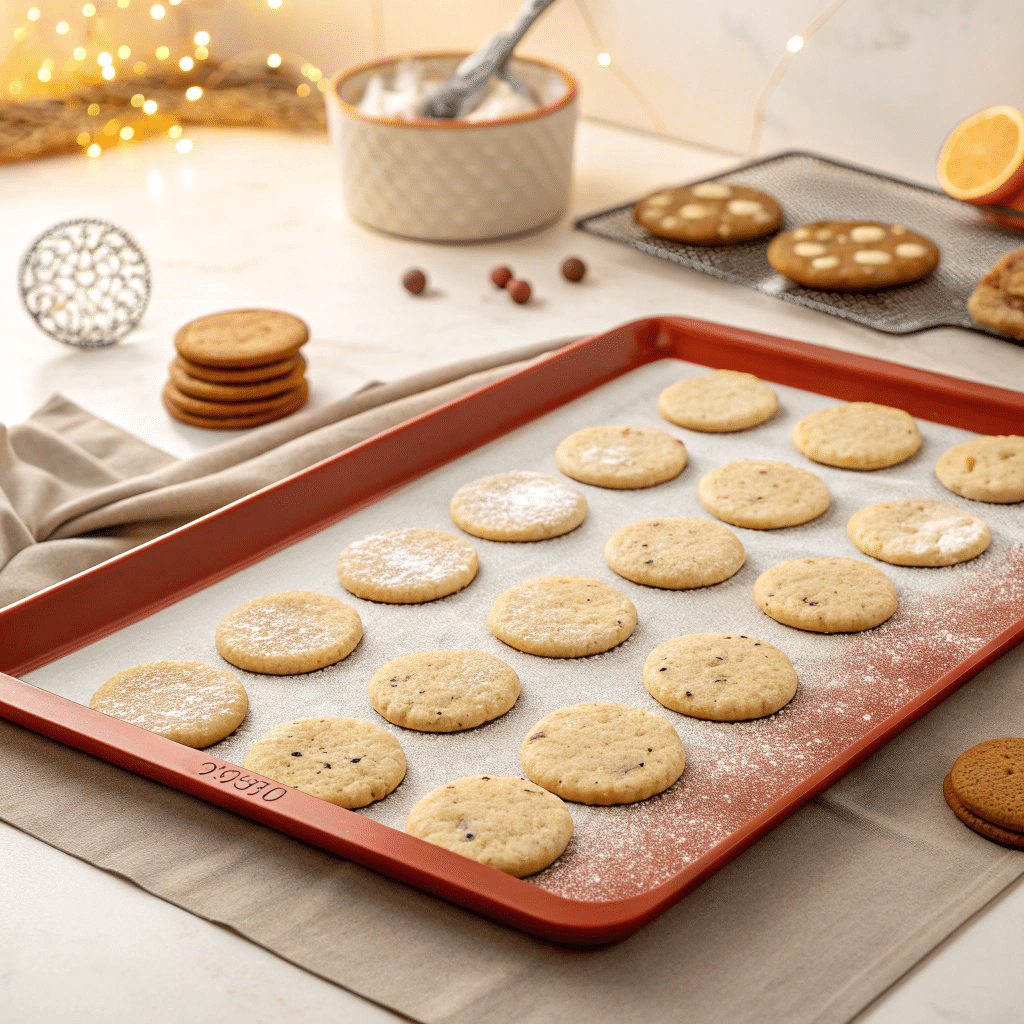Every baker has faced this question at least once: Should I reach for parchment paper or a silicone baking mat? Both claim to make life easier in the kitchen, but which one actually delivers better results? I’ve tested both for everything from chocolate chip cookies to no bake cookies, and today I’m breaking it all down for you—straightforward, practical, and without fluff.
The Case for Parchment Paper

Parchment paper is the old faithful of baking. It’s thin, disposable, and makes cleanup a breeze. You can buy it almost anywhere, and it comes in rolls, sheets, or pre-cut circles for cake pans.
Why bakers love parchment:
- Nonstick surface: Cookies slide right off without a fight.
- Even baking: It helps prevent hot spots and keeps bottoms from burning.
- Custom fit: You can trim it to fit any pan size.
- Versatility: Perfect for roasting veggies, wrapping fish, or even layering between cookies in storage tins.
If you’ve ever wondered how to line a baking pan with parchment paper, it’s simple: cut it to size, grease the corners if needed, and press it down. It clings easily, and if it doesn’t, a dab of butter or oil will keep it in place.
The downsides: It’s single-use, which isn’t exactly eco lifestyle friendly. It also curls when it comes off the roll—usually at the worst time possible, right as you’re scooping cookie dough.
The Case for Silicone Mats

Silicone mats (sometimes called silicone baking mats) look futuristic next to humble parchment. They’re reusable sheets made from food-grade silicone layered with fiberglass mesh. Popularized by brands you might’ve spotted on Serious Eats reviews, they’re known for lasting years.
Why bakers love silicone mats:
- Durability: Wash, dry, repeat. They last through thousands of uses.
- Eco-friendly: No tossing sheet after sheet in the trash.
- Consistent results: They conduct heat evenly, reducing cookie spread.
- Stability: No curling edges or wrestling with scissors.
They’re a one-size-fits-most tool, so you don’t cut them to fit like parchment. Slip one onto your baking sheet, place dough on top, and bake away. Cleanup is usually just a quick rinse under warm water.
The downsides: They’re pricier up front, and storing them can be awkward if you’re short on kitchen space. They also don’t crisp foods as much as parchment. If you love crunchy roasted potatoes, parchment still wins.
Cookie Spread: The Real Test
Cookies are where the parchment vs silicone debate gets interesting. On parchment paper, cookies tend to spread a bit more, giving that classic golden edge. On silicone mats, cookies spread less, staying thicker and slightly chewier in the center.
Neither is wrong—it depends on what you want. If you’re gifting a tin of perfectly round cookies from your Christmas cookbook collection, silicone mats help with uniformity. If you’re chasing those bakery-style crisp edges, parchment is your best friend.
Cakes, Brownies, and Bars
Here’s where parchment really shines. Lining a pan with parchment makes lifting cakes or brownies effortless. You just pull up the paper, and out it comes—no sticking, no digging with a knife, no heartbreak.
Silicone mats don’t work here. They’re flat and can’t mold to the shape of a round cake pan or fit snugly in a square brownie dish. If you’re baking layered cakes for birthdays or prepping gluten free gifts like almond flour brownies, parchment is your go-to.
Roasting and Savory Baking
For roasted veggies, parchment edges out silicone because it allows for better browning and crisping. Silicone mats trap steam a bit more, which can soften things up. That’s perfect for delicate fish fillets, though, so don’t write them off entirely.
Which One Is Better for an Eco Lifestyle?

If you’re trying to cut down on waste, silicone mats clearly have the upper hand. A single mat can replace hundreds of sheets of parchment paper. That said, parchment has compostable options (check your packaging). Eco-conscious bakers sometimes keep both: parchment for special projects like cakes, and silicone mats for daily baking.
Special Use Cases You’ll Care About
- No Bake Cookies: Both work, but silicone mats are unbeatable for sticky mixtures. The cookies lift off clean every time.
- Candy-making: Parchment handles heat from melted sugar better. Silicone can get too hot and hold the stickiness.
- Gifting: If you’re prepping holiday tins or gluten free gifts, parchment layers keep cookies separated and fresh. Silicone mats can’t do that job.
- Everyday kitchen helper: Both shine as kitchen helpers, just in different ways. Think of parchment as your single-use problem solver and silicone mats as your long-term sidekick.
My Take as a Dessert Enthusiast

If I had to pick just one, I’d say start with parchment. It’s cheap, versatile, and solves nearly every baking challenge. But once you’re baking weekly (or daily), a silicone mat pays for itself. I use mine for test batches of cookies, macarons, and quick no bake cookies. For layered cakes, delicate desserts, or anything going into my Christmas cookbook collection, parchment wins hands down.
It’s not a battle of good vs bad—it’s about having the right tool for the right moment. Like choosing between a whisk and a stand mixer, sometimes both deserve a spot in your kitchen.
Final Word
Both parchment paper and silicone mats deserve space in your kitchen. One’s a quick fix, the other’s a long-term kitchen helper. Think of parchment as your everyday safety net and silicone as your eco lifestyle upgrade. Together, they make baking easier, tastier, and a whole lot sweeter.
FAQs
1. Can you reuse parchment paper?
Yes, but only once or twice. After a few rounds, it gets brittle and may tear.
2. Do silicone mats affect baking time?
Slightly. Because they insulate better, cookies may need an extra minute in the oven compared to parchment.
3. Can I cut silicone mats to fit my pans?
No, don’t cut them. The fiberglass mesh inside gets exposed, and that ruins them.
4. Which is better for macarons?
Silicone mats win here. They give uniform shapes and prevent sticking, which is crucial for delicate shells.
5. Are parchment paper and wax paper the same?
No. Wax paper is coated in wax and melts in the oven. Stick to parchment or silicone for baking.
6. Which is safer for high-heat roasting?
Parchment paper is usually safe up to 425°F. Silicone mats can handle up to 480°F, but food may brown less.
7. What should I buy first if I’m new to baking?
Start with parchment. It’s affordable, versatile, and teaches you how baked goods behave. Later, invest in a silicone mat.

